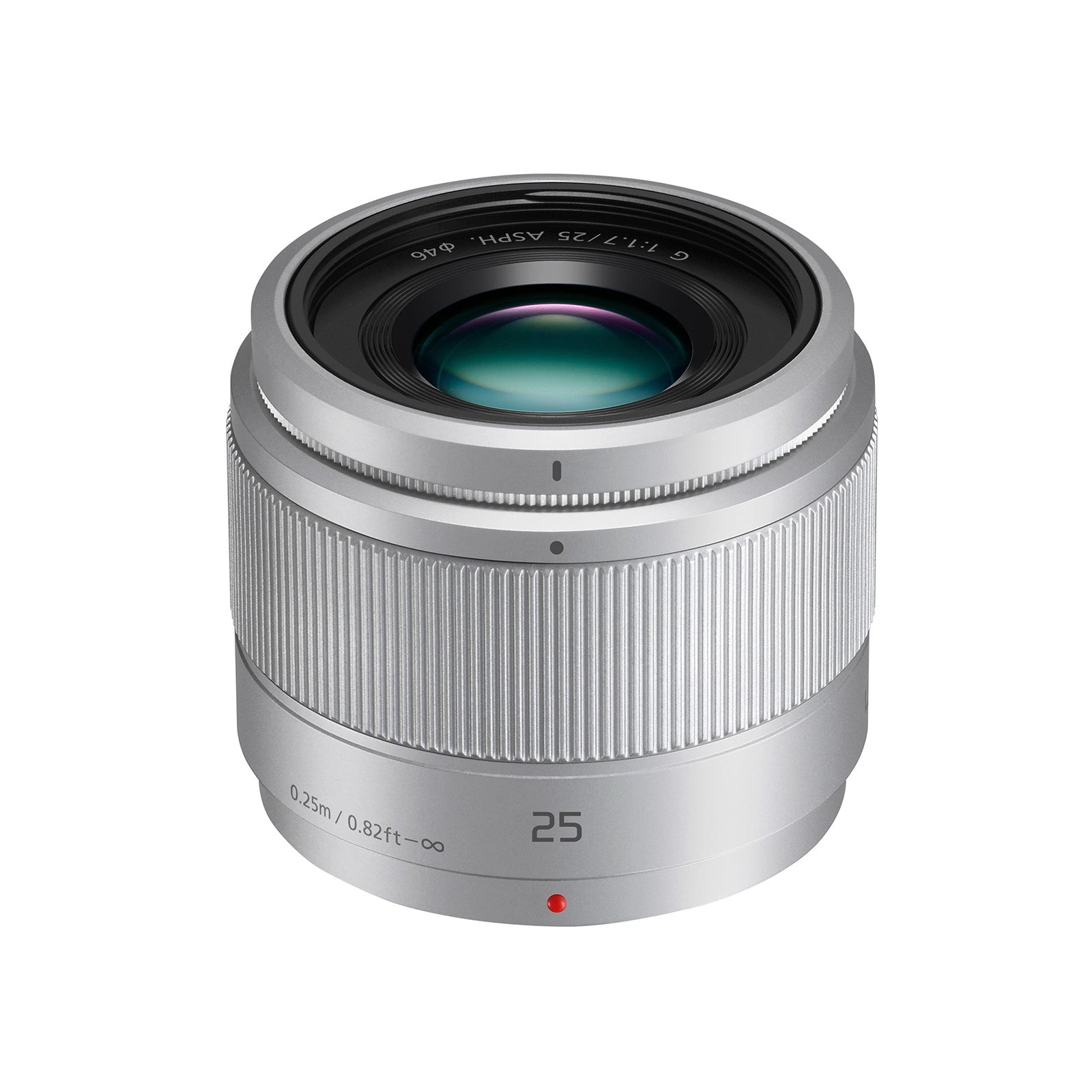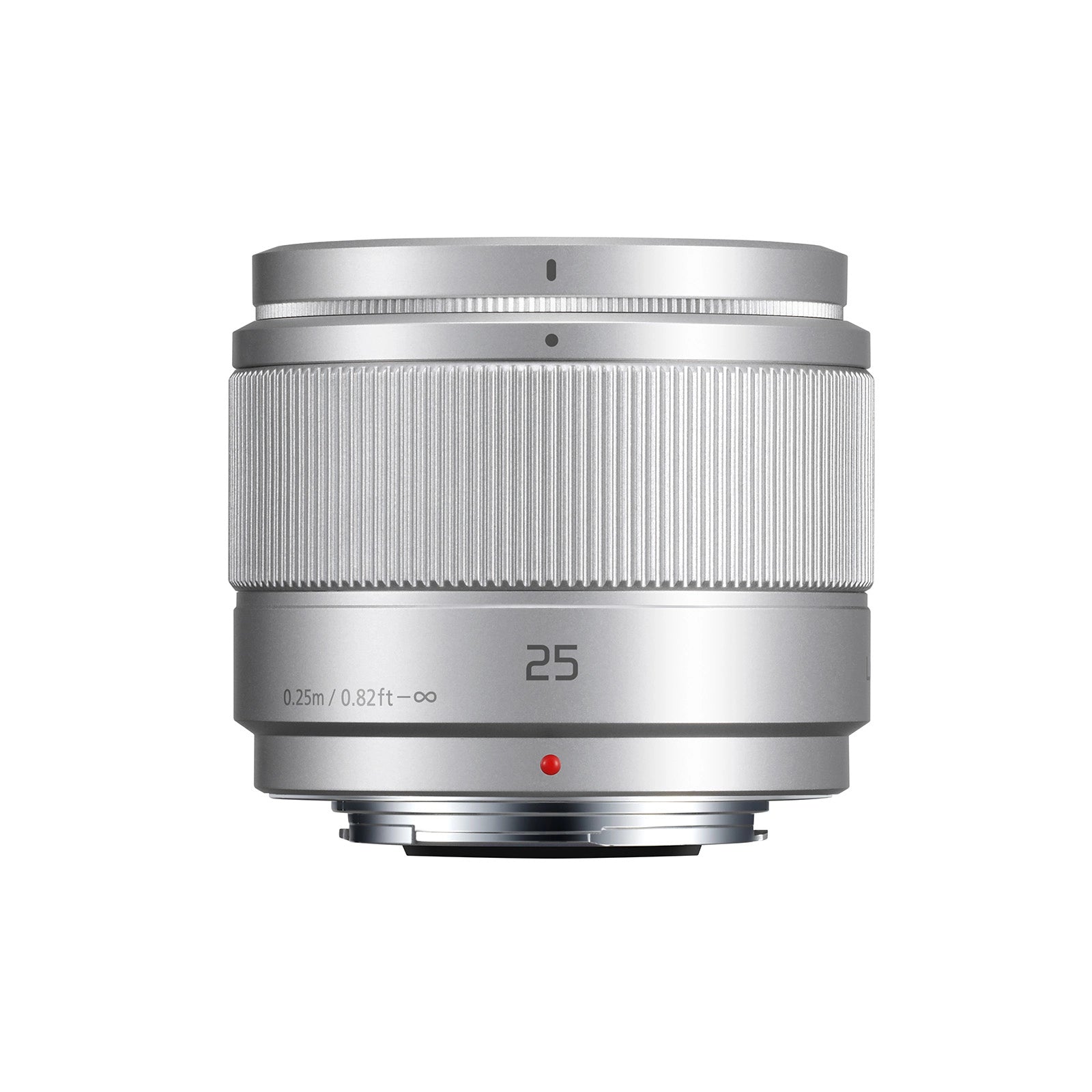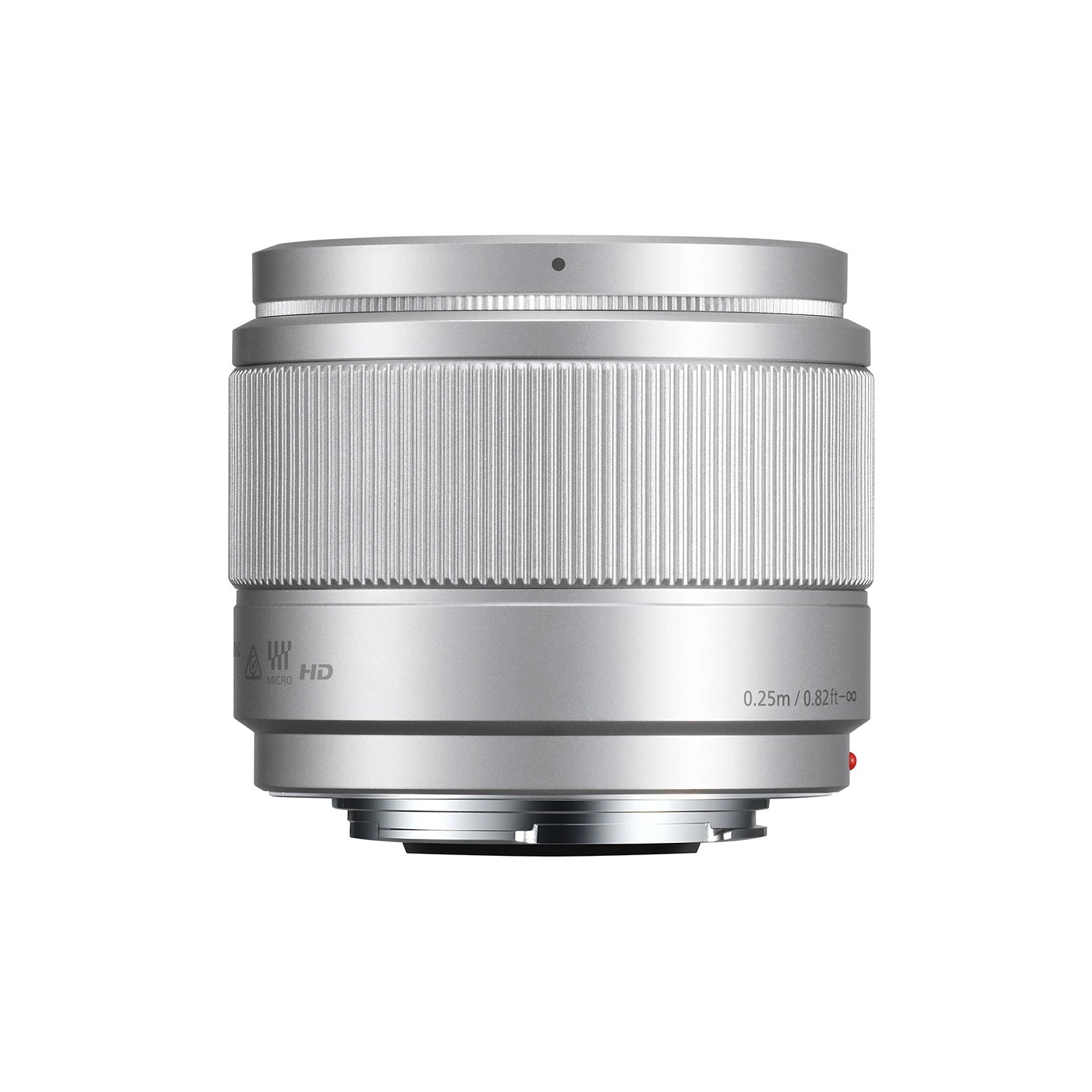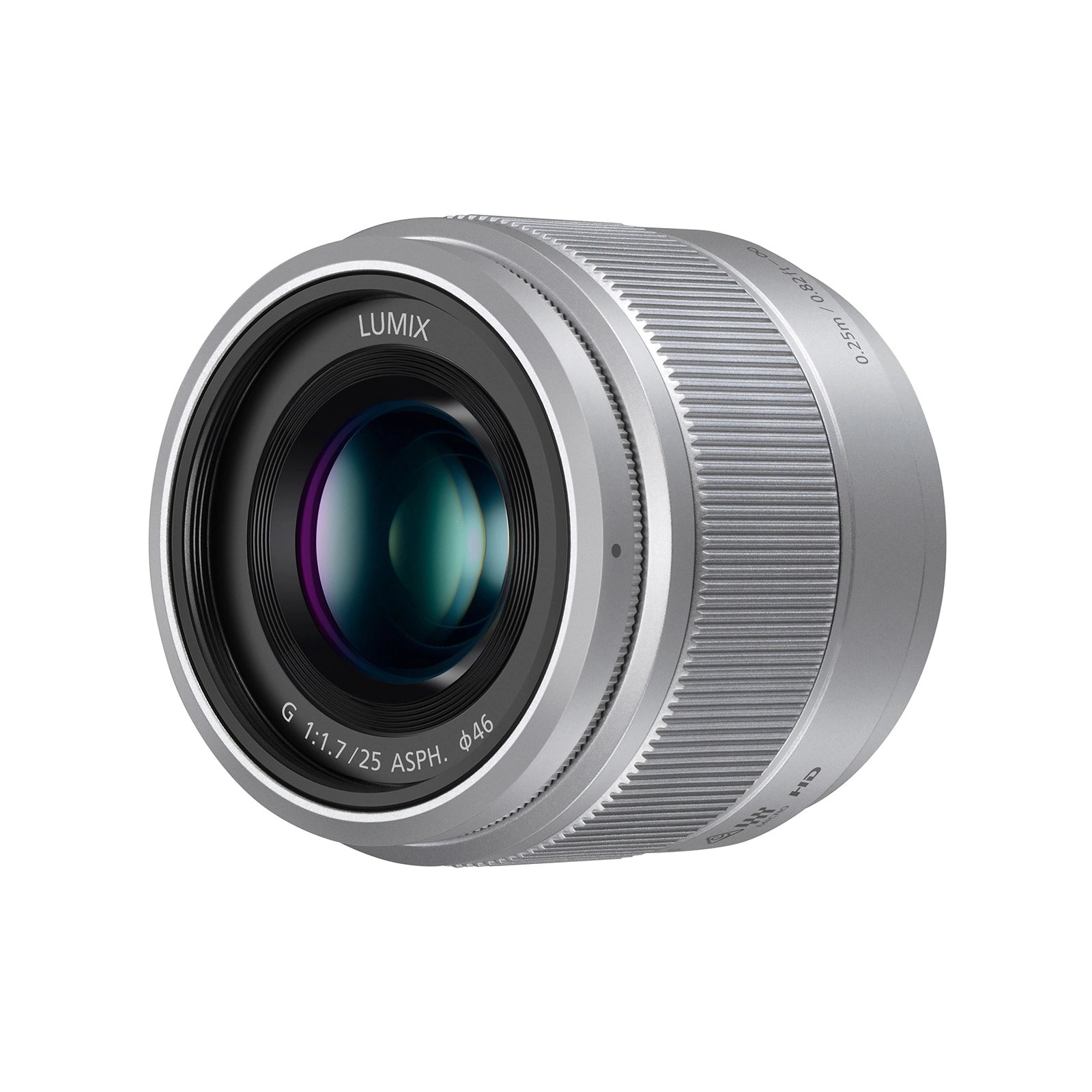Product Description
Panasonic 25mm F1.7 LUMIX G ASPH Lens – Black
Capture stunning images with the Panasonic 25mm F1.7 LUMIX G ASPH Lens, a fast and versatile prime lens designed for Micro Four Thirds mirrorless cameras. Offering a 50mm equivalent focal length (in 35mm format), this lens delivers a natural perspective that is ideal for a wide range of photography, including portraits, landscapes, and everyday shooting.

Bright f/1.7 Aperture for Stunning Low-Light Performance
With a bright f/1.7 maximum aperture, this lens excels in low-light conditions, allowing you to shoot in dim environments without compromising image quality. The wide aperture also provides exceptional control over depth of field, enabling you to create beautifully defocused backgrounds for professional-looking bokeh. Whether you're shooting in natural light or in low-light indoor settings, this lens ensures clear, sharp, and vibrant images.
Exceptional Optical Design for Sharp, Clear Images
The Panasonic 25mm F1.7 LUMIX G features advanced optical elements, including one Ultra-High Refractive Index (UHR) element and two aspherical elements, designed to reduce chromatic aberrations and distortions. This results in edge-to-edge sharpness and even illumination across the entire frame, ensuring high clarity and image fidelity even at wide apertures. The precise optical construction also contributes to the lens’s compact size, making it highly portable and convenient for everyday use.

Compact, Lightweight Design for On-the-Go Photography
Weighing just 4.4 oz and measuring only 2 inches in length, the Panasonic 25mm F1.7 is incredibly compact and lightweight, making it the perfect travel companion. Its small form factor allows you to carry it easily for day-to-day shooting, without sacrificing performance. Despite its compact size, this lens delivers high-quality results, making it an excellent choice for photographers who need both portability and versatility.
Fast, Silent Autofocus for Stills and Video
Equipped with a stepping AF motor, this lens ensures smooth, silent, and accurate autofocus that is ideal for both still photography and video recording. The autofocus system works seamlessly with Panasonic’s high-speed Contrast AF technology, delivering fast and precise focusing performance. Whether you're capturing fleeting moments or shooting video, the quiet operation of this lens makes it suitable for environments where silence is crucial.

Beautiful Bokeh for Artistic Shots
The rounded 7-blade diaphragm of the Panasonic 25mm F1.7 produces soft, smooth bokeh, enhancing the aesthetic appeal of out-of-focus areas in your images. Whether you're capturing portraits with blurred backgrounds or shooting artistic close-ups, this lens provides the tools you need to create images with stunning depth and separation between subject and background.
Key Features at a Glance:
- Focal Length: 25mm (50mm equivalent in 35mm format)
- Aperture Range: f/1.7 to f/22 for flexible depth of field and low-light performance
- Optical Design: One Ultra-High Refractive Index (UHR) element and two aspherical elements for sharpness and clarity
- Fast, Silent Autofocus: Stepping motor provides smooth and near-silent AF performance for both photos and videos
- Compact and Lightweight: Weighs just 4.4 oz and measures 2 inches for maximum portability
- Beautiful Bokeh: Rounded 7-blade diaphragm delivers smooth, defocused backgrounds
- Compatible with Micro Four Thirds Cameras: Provides a 50mm equivalent focal length for natural perspective

Designed to meet the demands of both photographers and videographers, the Panasonic 25mm F1.7 LUMIX G ASPH Lens is a versatile and high-performance prime lens that delivers stunning results in a variety of shooting situations. With its bright f/1.7 aperture, fast autofocus, and compact design, this lens is perfect for capturing professional-quality images in any setting.
Upgrade your photography today with the Panasonic 25mm F1.7 and unlock new creative possibilities.
For full specifications and more details, click Here.

Payment & Security
Your payment information is processed securely. We do not store credit card details nor have access to your credit card information.



















